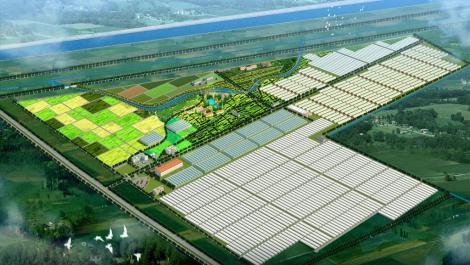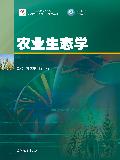| 作品名称: | 生态学数字课程 |
| 作 者: | 林文雄 |
| 出版单位: | 高等教育出版社 高等教育电子音像出版社 |
| 出版时间: | 2015年12月 |
| 策划编辑: | 吴雪梅 |
| 责任编辑: | 孟丽 |
| 技术编辑: | 毛芳 |
版权说明: |
本数字课程的专有出版权归高等教育出版社所有。未经出版者预先书面许可,任何单位和个人不得为任何目的、以任何形式或手段复制和传播本数字课程的任何部分,出版者保留一切法律追究的权利。 |


福建农林大学“生态学”课程在“十一五”期间被评为国家级精品课程,“十二五”期间成功转型升级为国家级精品资源共享课。生态学主要探索不同层次生物的结构、功能以及生物生活习性与环境因子之间的关系,揭示生态系统中生物生存与发展、能量流动以及物质循环的规律和本质。多年来,本课程始终坚持理农相结合,教学科研相促进,培养创新型人才的教学理念,形成了独具特色的教学内容和体系。
版权信息
联系方式
电话:010-58581264
E-mail:ligy@hep.com.cn
技术咨询:毛芳
电话:010-58581454
E-mail:maofang@hep.com.cn
-

-
农业生态学
作者:林文雄 陈雨海
高等教育出版社
出版时间:2015-08
ISBN:978-7-04-042728-8
课程大纲
生态学(双语课)
(Bilingual Ecology)
(总学时42)
一、前言
本课程为生物学科专业本科生的专业核心课,也是生物类其它专业的任选课,采用双语教学。理论教学学时42,2.5学分。
二、课程教学目的
生态学是研究生物与环境之间相互关系的科学,属宏观生物学范畴。
生态学是生物科学本科专业学生必修的专业基础课,先修课程主要有大学数学、植物生物学、动物生物学。
通过本课程的学习,要求学重点掌握生态学的基本原理,掌握自然生态现象与过程的观察、分析方法和生态学的基本实验研究技术,具备一定的生态观念与环保意识,以及运用生态学原理从事生物生产和管理的一般能力,为进一步学习有关专业课奠定良好的生态学基础。
三、教学基本要求和方法
第一部分:理论篇
1.生物与环境相互作用原理(个体生态学基础)
重点掌握主要生态因子与生物间相互作用的方式与机制,掌握基本概念和相互作用的一般规律,了解当前生态环境问题及其与生态学研究的关系,引导学生着重掌握个体营养及其生态学意义。
2.种群生态学基础
重点掌握种群基本特征和种群动态的基本规律,掌握种间、种内相互作用机制及其生态意义,物种进化与自然选择规律,了解种群动态与种间相互作用的应用。学生应着重掌握种群的数量特征、动态特征和遗传特征。
3.群落生态学基础
重点掌握群落结构、动态与分布的基本概念和一般规律,掌握群落特征时空变化的主要影响因素及相关理论,了解群落动态规律及其应用。引导学生着重掌握群落的水平结构和垂直结构特征,特别是了解生态位理论及其在农业上的应用。
4.生态系统生态学基础
重点掌握生态系统结构、能流、物流特征,掌握生态系统的功能过程及调控机制,了解生态系统平衡的现实意义。引导学生掌握系统结构与功能的关系,了解生态系统物质循环与能量转化规律及其在农业生产上的应用。
第二部分:应用篇
重点掌握生态文明的内涵及特征,掌握建设生态文明的理论基础,即生态学基本原理,了解生态农业的基本特点及在中国的应用现状,了解如何应用科技创新手段应对生态安全的挑战,了解生物多样性保护的意义及现状,了解如何发展多功能农业及美丽乡村建设。
四、课程考核方式
该课程的总成绩由平时考核成绩(占总成绩的30%)、期末考核成绩(占总成绩的70%)两部分构成。
1.平时考核成绩
平时成绩包括2次平时作业记分成绩、1次专题报告和出勤情况组成,分别总成绩的40%、10%和10%。
2.期末考核
期末考核形式为笔试闭卷,卷面分数为100分。期末考试成绩占总成绩的40%,考核范围参照期末复习大纲。
五、授课教材及主要参考书目
1.教材《Elements of Ecology7th》,Thomas M.Smith,Robert Leo Smith.Pearson International Edition.2010.
2.《Instant Notes in Ecology》,Aulay Mackenzie,Andy S. Ball,Sonia R. Virdee.科学出版社,1999.
3.《Ecology-principles and applications》,J.L.Chapman,M.J.Reiss,科学出版社.2003.
4. Ecology(Fifth Edition), Charles J.Kerbs.科学出版社,2003.
5.《生态学》,林文雄.科学出版社,2007.
6.《生态学》,常杰.浙江大学出版社,2001.
7.《普通生态学——原理、方法和应用》,郑师章主编.复旦大学出版社.2002.
8.《普通生态学》(第二版),尚玉昌编著.清华大学出版社,2002.
9.《生态学》(第二版),李振基主编.科学出版社,2004.
六、学分和学时分配
本课程共42学时,2.5学分。包括理论篇和应用篇两个部分。
第一部分:理论篇。包括第一章(2学时);第二章(6学时);第三章(12学时);第四章(7学时);第五章(9学时)。
第二部分:应用篇。主题为应用生态学基本原理,建设生态文明,构建美丽中国梦。该部分共6个学时。
七、教学内容及学时分配
(一)第一部分:理论篇(36学时)
Chapter 1 Introduction (2学时)
1、Purpose of this chapter
Purpose of this chapter is to introduce the conception, emergence and development of ecology, and the role of ecology in life science, and help students be convinced of the importance of ecological laws in resolving environmental problems.
2、Contents of this chapter
1.The definition of ecology
2.Researching object of ecology
3.Branches of Ecology
4.The history of ecology
5.Main researching points of Global ecology or biosphere ecology
Chapter 2. Autecology——The Organism and its environment (6学时)
1、Purpose of this chapter:
Purpose of this chapter is to introduce the features and function of ecological factors, the main effects of main environmental factors on living organisms, and the adaptability of living organism to its inhabit, which will help the students understand the interaction of biology and environment.
2、Contents of this chapter
Section1 Principle of action and opposite reaction
(1)The principle of action and opposite reaction
(2)The law of the minimum
(3)The law of tolerance
Section 2 The habitat and ecological factors
(1)Environment
(2)Ecological factors
Section 3 Ecological genetics: adaptation and natural selection
(1)Adaptation is a product of evolution by natural selection
(2)Natural selection can result in genetic differentiation
Section 4 The adaptations of plants and animals to the environments
(1)Indicator species
(2)Physiological adaptation--photosynthesis
(3) Bottleneck effect
(4)Founder effect
(5)Allen’s rule
(6)Bergmann’s rule
(7)Liebig’s law of minimum
(8)Shelford’s law of tolerance
(9)Law of limiting factors
Section 5 Life history patterns
(1)Reproduction may be aexual or asexual
(2)Mating systems
(3)Organisms budget time and energy to reproduction
(4)Environmental conditions influence the evolution of life history characteristics
Chapter 3. Population ecology (12学时)
1、Purpose of this chapter
Purpose of this chapter is to introduce population about its conception, basic characteristics, quantitative dynamic, and ecological genetics, and intraspecific and interspecific relationship of populations, which will help students understand the interaction between living organisms and its environment in population level, and recognize that population is the basic unit of species, and that the laws of intraspecific and interspecific relationship are important in ecological engineering.
2、Contents of this chapter
Section 1 The introduction of population
(1)Organisms may be unitary or modular
(2)Definition of a population
Section 2 Properties of population
(1)The Distribution of a population defines
(2)Abundance reflects both the population density and distribution
(3)Determining density requires sampling
(4)Population have age structures
(5)Sex ratios in populations may shift with age
(6)Individual move within the population
(7)Population distribution and density change in both time and space
Section 3 Population growth
(1)Population growth reflects the difference between rates of birth and death
(2)Lifetables provide a schedule of age-specific mortality and survival
(3)Different types of life tables reflect different approaches to defining cohorts and age structure
(4)Life Table Provide Data for Mortality and Survivorship Curves
(5)Birthrate is age-specific
(6)Birthrate and survivorship determine net reproductive rate
(7)Age-specific mortality and birthrates can be used to project population growth
(8)Stochastic processes can influence population dynamics
(9)Small populations are susceptible to extinctionSection
4 Population regulation
(1)The Environment functions to limit population growth
(2)Density dependence regulation
(3)Competition results when resources are limited
(4)Competition affects growth, development and mortality rates
(5)Dispersal can be density dependent
(6)Territoriality can function to regulate population growth
(7)Plant preempt space and resource
(8)Density-independent factors can influence population growth
Section 5 Metapopulation
(1)How to define a metapopulation
(2)Sources and sinks
Section 6 Intraspecific and interspecific relationship of populations
(1)Interspecific competition involves two or more species
(2)There are four possible outcomes of interspecific competition
(3)Laboratory experiments support the Lotka–Volterra equations
(4)Studies support the competitive exclusion principle
(5)Interspecific competition influences the niche of a species
(6)Coexistence of species often involves partitioning available resources
(7)Competition can influence natural selection
(8)Predation takes a variety of forms
(9)Mathematical model sescribes the basics of predation
Chapter 4. Community ecology (7学时)
1、Purpose of this chapter
Purpose of this chapter is to introduction the characteristics, constitutes, structure, dynamic and biodiversity of biome, which can help students master the application of community principles and understand the application of ecological laws in protectiing environment, maintaining ecological balance, and improving population productivity.
2、Contents of this Chapter
Section 1 Basic features and components of biotic community
(1)Basic features of biotic community
(2)Components in community
Section 2 The structure of community
(1)Species Diversity
(2)Dominance
(3)Keystone species
(4)Food web
(5)Functional groups
(6)Communities have a definitive physical structure
(7)Zonation is spatial change in community structure
(8)Defining boundaries between communities is often difficult
(9)Two contrasting views of community
Section 3 Factors influencing the structure of communities
(1)Fundamental niche constrains community structure
(2)Species interactions are diffuse
(3)Food web illustrate indirect interactions
(4)Food web suggest controls of community structure
(5)Species interactions along environmental gradients involve both stress tolerance and competition
(6)Environmental heterogeneity influences community diversity
(7)Resource availability can influences plant diversity within a community
Section 4 Community dynamics
(1)Community structure changes through time
(2)Primary succession occurs on newly exposed substrates
(3)Secondary succession occurs after disturbances
(4)Study of succession has a rich history
(5)Succession is associated with autogenic changes
(6)Species diversity changes during succession
(7)Succession involves heterotrophic species
(8)Concept of community revisited
Chapter 5. Ecosystem Ecology (9学时)
1、Purpose of this chapterPurpose of this chapte
r is to introduction the constitutes, structure, and function of ecosystem, which can help students master the functional process and controlling mechanism of system, and understand the significance of ecological balance, material cycle and energy flow.
2、Contents of this chapter
Section 1 Introduction and basic principle in ecosystem ecology
(1)Basic features of ecosystem
(2)Energy flow of ecosystem
(3)Basic principle in ecosystem ecology
Section2 Decomposition and nutrient cycling and biogeochemical cycles
(1)Most essential nutrients are recycles within the ecosystem
(2)Decomposition is a complex process involving a variety of organisms
(3)Studying decomposition involves following the fate of dead organic matter
(4)Several factors influence the rate of decomposition
(5)Nutrients in organic matter are mineralized during decomposition
(6)Decomposition proceeds as plant litter is converted into soil organic matter
(7)Plant processes enhance the decomposition of soil organic matter in the rhizosphere?
(8)Decomposition occurs in aquatic environments
(9)Key ecosystem processes influence the rate of nutrient cycling
(10)Nutrient cycling differs between terrestrial and open-water aquatic ecosystems
第二部分:应用篇(6学时)
第一讲 生态文明:美丽中国梦的基石(1课时)
(1)中国古代朴素生态观。
(2)文明传承与生态发展。
(3)中国梦呼唤生态文明。
第二讲 生态文明的理论基础:生态学基本原理(1课时)
(1)作用与反作用原理。
(2)生态金字塔原理。
(3)物质循环再生原理。
(4)生物生态位原理。
(5)生态平衡原理。
(6)生态经济学原理。
第三讲 生态农业——现代农业发展的必然趋势(1课时)
(1)生态农业的基本概念。
(2)生态农业的发展历程。
(3)生态农业的基本特点。
(4)生态农业的模式和技术体系。
(5)生态农业在中国。
第四讲 科技创新——应对生态安全挑战(1课时)
(1)生态文明建设所面临的环境安全问题。
(2)科技创新——以农业生态系统为例。
① 科技创新——粮食生产的良种
② 科技创新——粮食生产的良法
③ 科技创新——环境重金属污染的修复
④ 科技创新——生物质能源
第五讲 生物多样性视角下的生态文明之路(1课时)
(1)生物多样性的基本内涵。
(2)生物多样性的价值。
(3)生物多样性现状与挑战。
(4)保护生物多样性 推进生态文明建设。
第六讲 多功能农业与美丽乡村建设(1课时)
(1)新农村的现实与理想。
(2)农村发展的宏观背景。
(3)农业多功能性的产生。
(4)美丽乡村的提出及实践。
(5)多功能农业视角下的美丽乡村建设。
编写人: 生命科学学院生物科学系林文雄教授、吴则焰讲师



